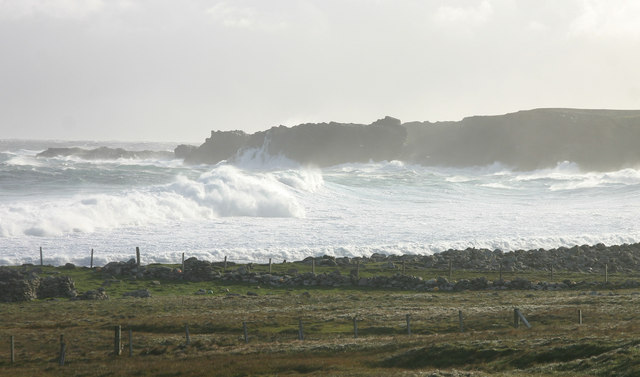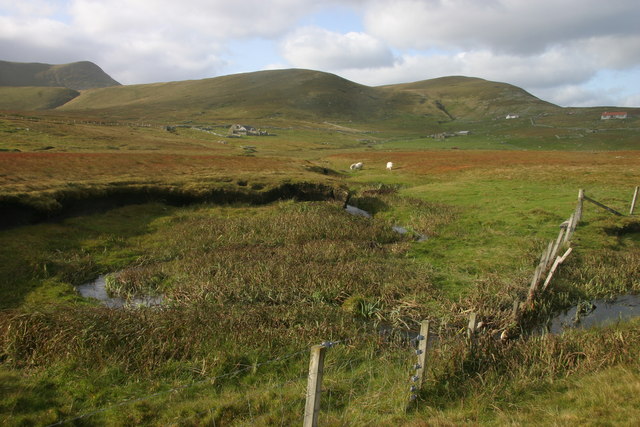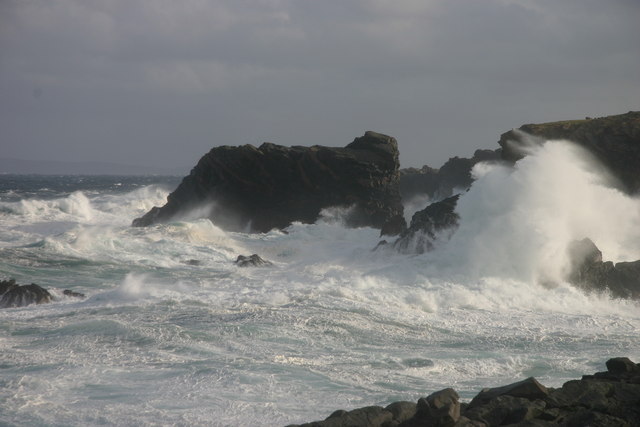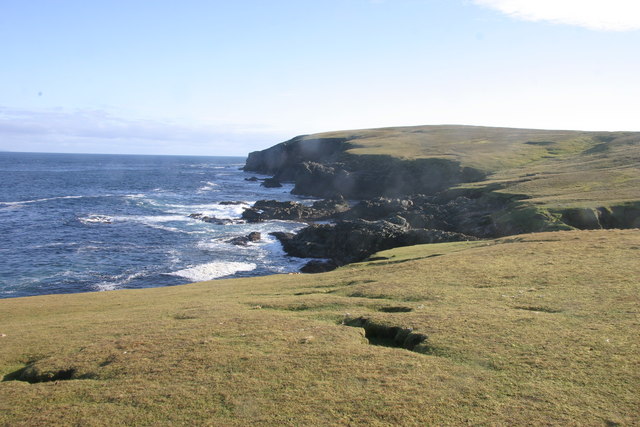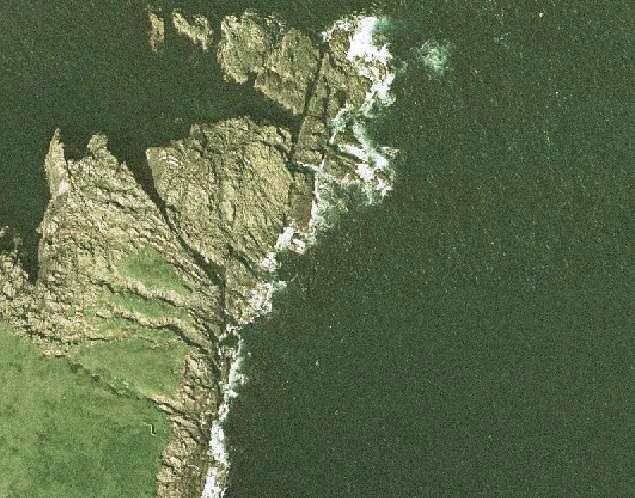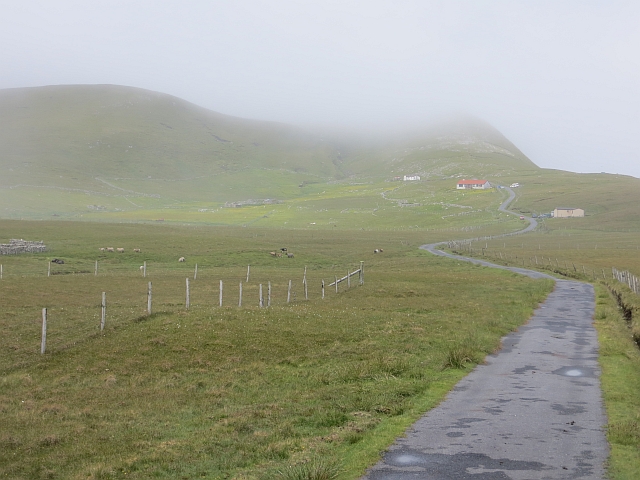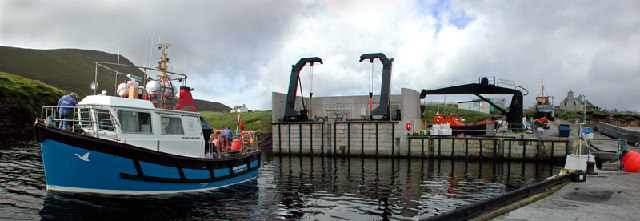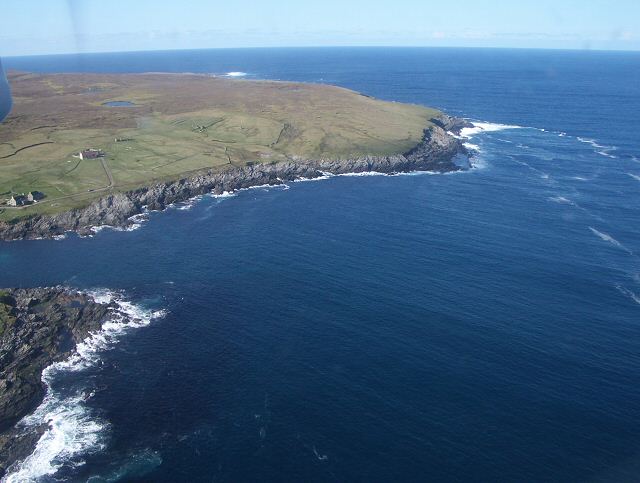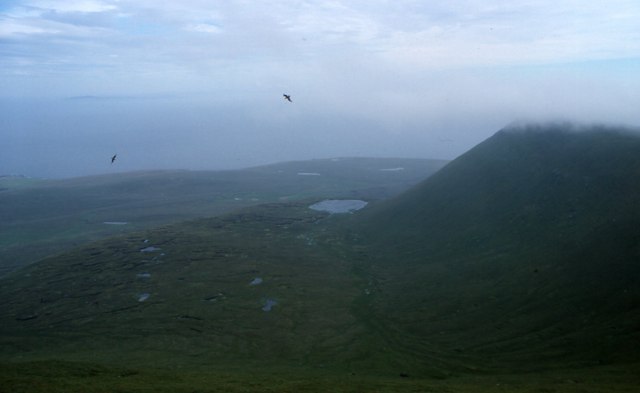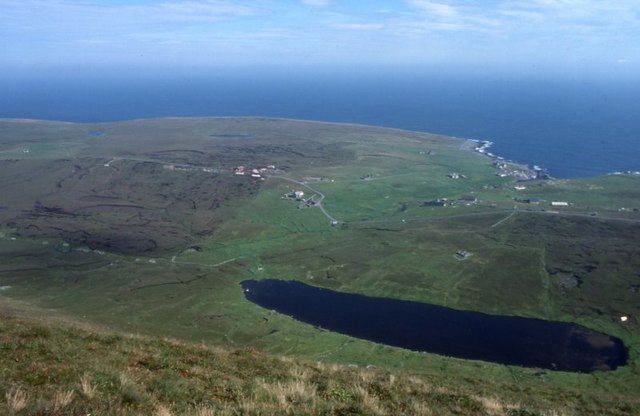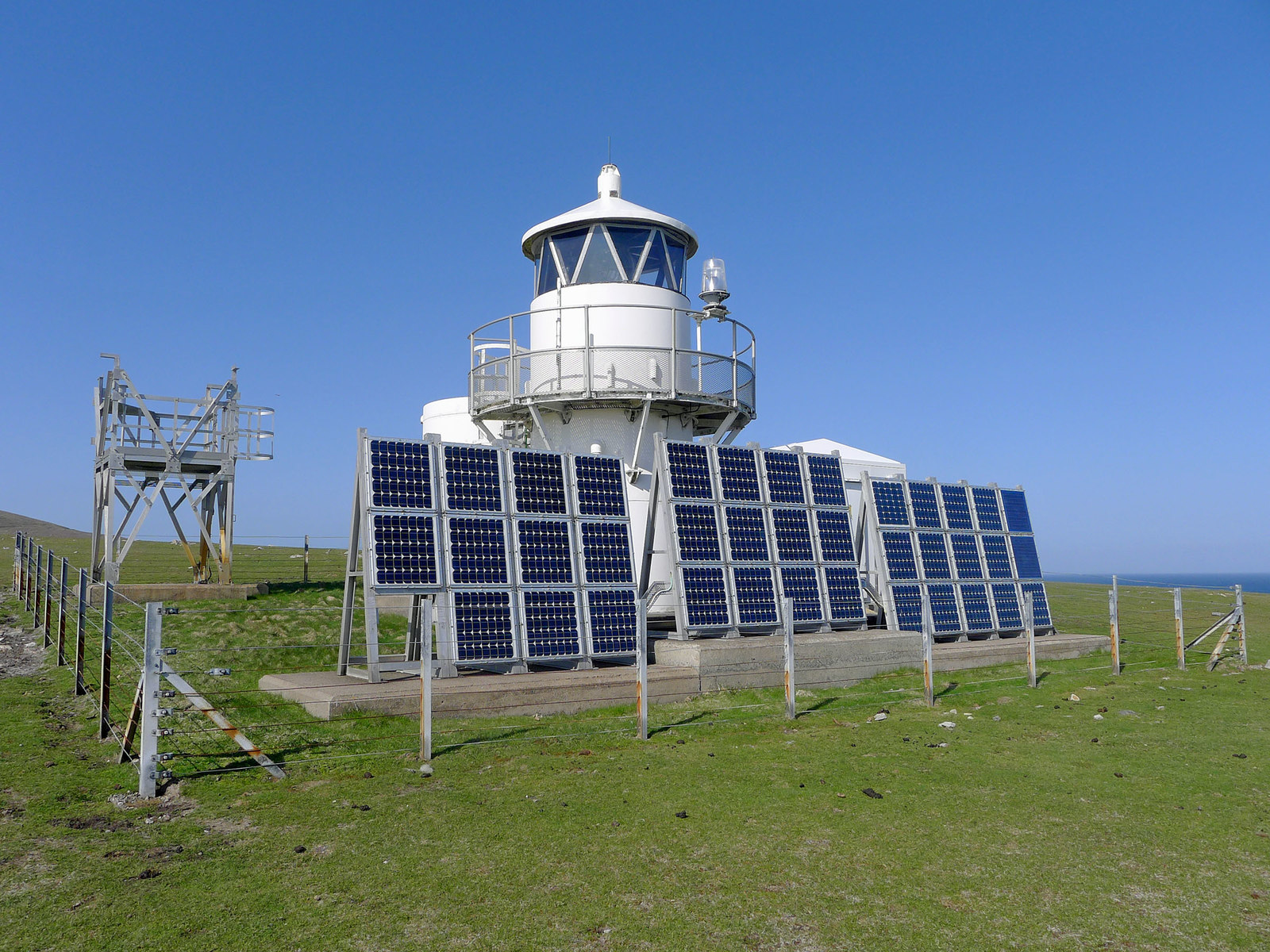Da Stack o da Gaads
Coastal Feature, Headland, Point in Shetland
Scotland
Da Stack o da Gaads
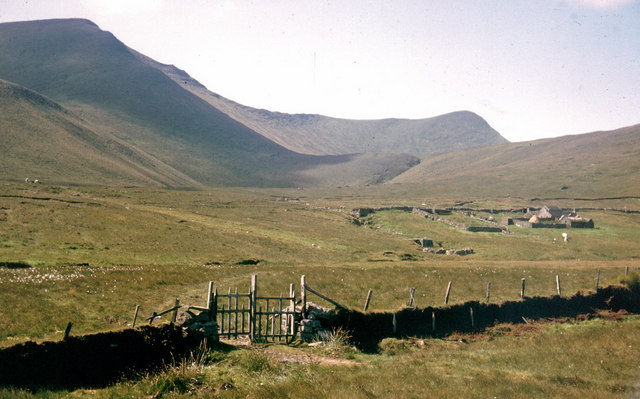
Da Stack o da Gaads is a prominent coastal feature located in the Shetland Islands, an archipelago in Scotland. This impressive geological formation is classified as a stack, which is a column of rock standing in the sea, detached from the mainland cliffs. It is situated on the eastern side of the mainland, near the village of Eshaness.
Rising majestically from the tumultuous North Atlantic Ocean, Da Stack o da Gaads reaches a height of approximately 60 meters (200 feet). Composed mainly of volcanic rock, the stack's rugged and sheer sides showcase the powerful forces of erosion and weathering that have shaped this coastal landscape over millennia.
The stack's name, "Da Stack o da Gaads," reflects the local Shetland dialect. "Da Stack" means "the stack," while "da gaads" translates to "the goats." This name is believed to have originated from the wild goats that once roamed the area, using the stack as a place of refuge.
The surrounding area of Da Stack o da Gaads is characterized by dramatic cliffs, including the Eshaness Cliffs, which offer breathtaking views of the stack and the surrounding coastline. These cliffs are composed of layered rock formations, showcasing different geological periods and providing insights into the region's geological history.
Due to its striking beauty and geological significance, Da Stack o da Gaads has become a popular attraction for tourists and nature enthusiasts. Visitors can marvel at the stack's imposing presence and witness the impressive power of the ocean as waves crash against its base. It is also a haven for seabirds, with colonies of puffins, fulmars, and guillemots often seen nesting on its ledges.
If you have any feedback on the listing, please let us know in the comments section below.
Da Stack o da Gaads Images
Images are sourced within 2km of 60.14379/-2.0452535 or Grid Reference HT9739. Thanks to Geograph Open Source API. All images are credited.
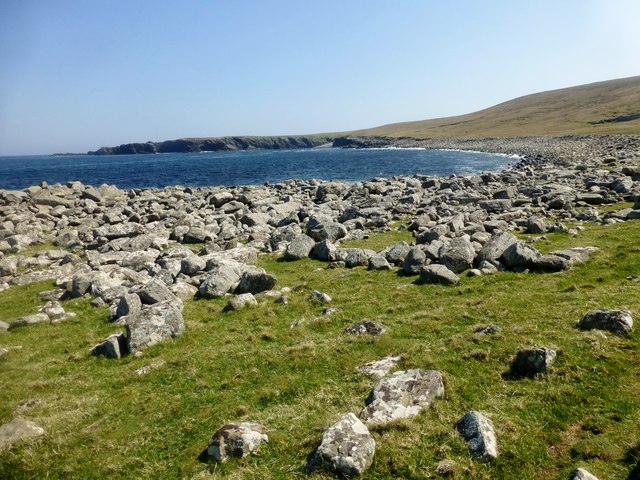
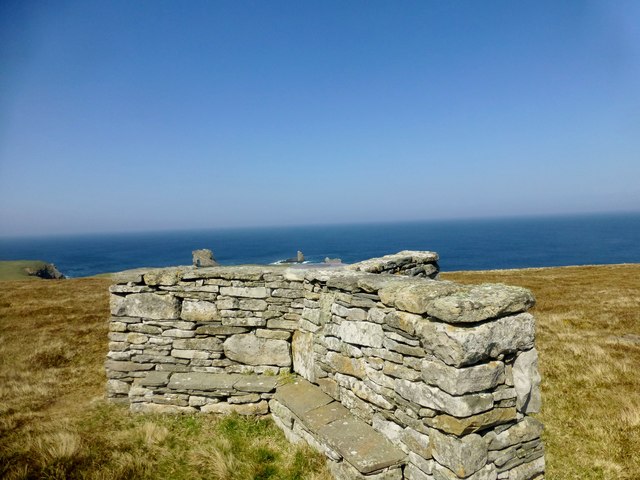
Da Stack o da Gaads is located at Grid Ref: HT9739 (Lat: 60.14379, Lng: -2.0452535)
Unitary Authority: Shetland Islands
Police Authority: Highlands and Islands
What 3 Words
///donor.universe.cooked. Near Walls, Shetland Islands
Related Wikis
Foula
Foula (), located in the Shetland archipelago of Scotland, is one of the United Kingdom's most remote permanently inhabited islands. Owned since the turn...
Foula Airfield
Foula Airfield (IATA: FOA) is an airfield located on the remote island of Foula, part of the Shetland Islands in the north of Scotland. == History == The...
RMS Oceanic (1899)
RMS Oceanic was a transatlantic ocean liner built for the White Star Line. She sailed on her maiden voyage on 6 September 1899 and was the largest ship...
Nearby Amenities
Located within 500m of 60.14379,-2.0452535Have you been to Da Stack o da Gaads?
Leave your review of Da Stack o da Gaads below (or comments, questions and feedback).
